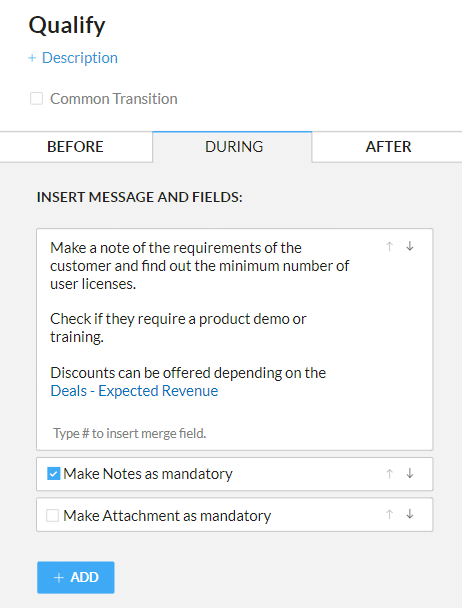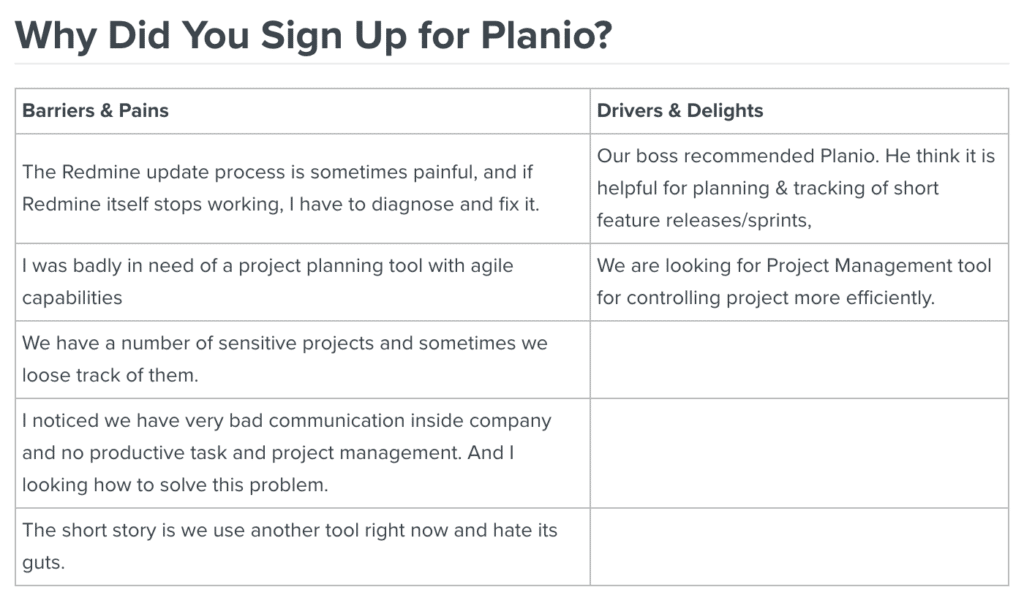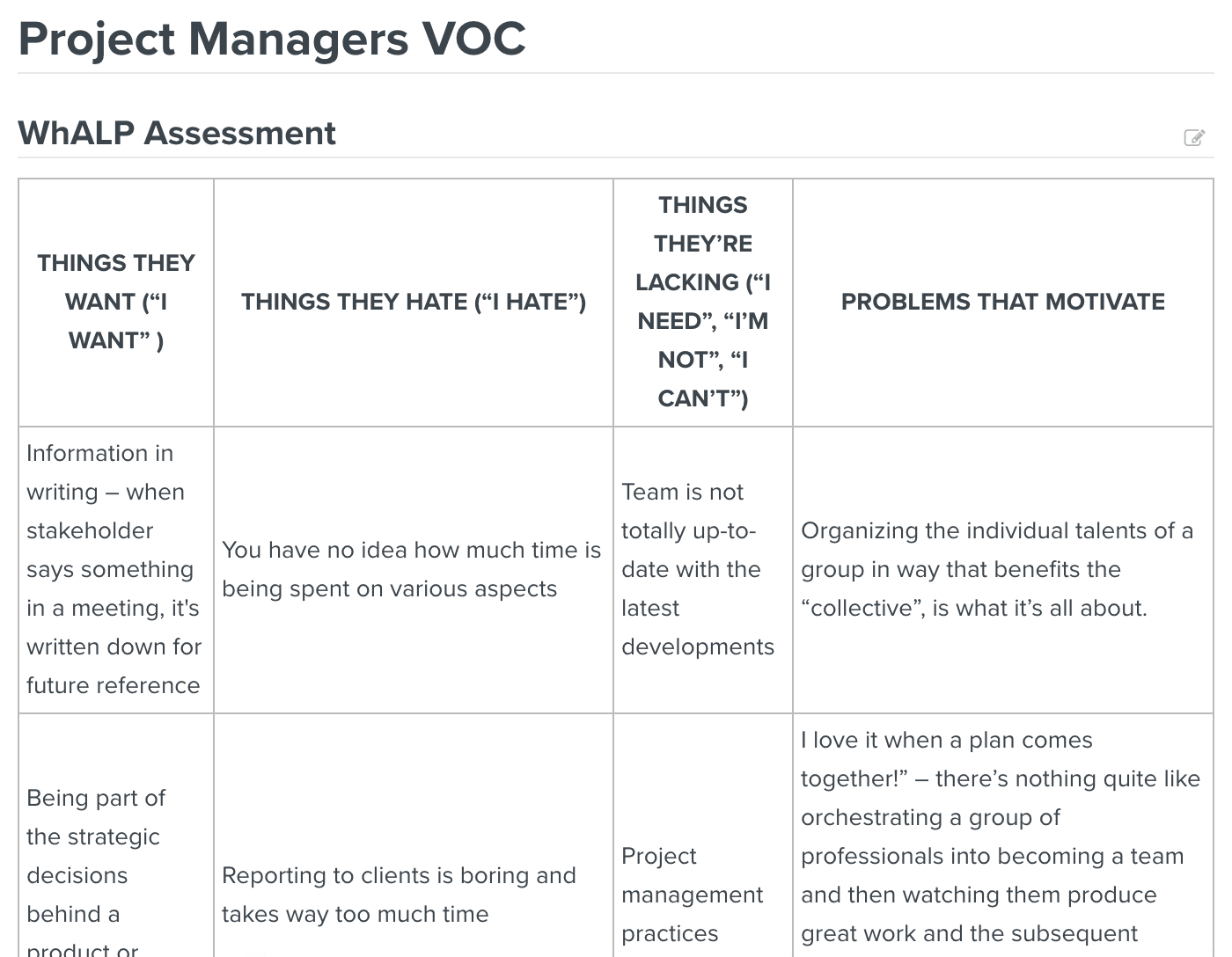Win Loss Analysis: The Ultimate 8-Steps Guide

Successful companies conduct win-loss analyses more than once to keep tabs on their best customers today.
Not only does it improve the sales team’s efficiency, but it also helps companies improve the product experience and create customer-centric content that converts to sales.
In this guide, you’ll learn how to calculate win percentage, the best time to analyze won and lost deals, and the eight most important things you should do in a win loss analysis to start on your best foot.
Win loss analysis is the process of figuring out why you won and lost your sales deals, measured against factors like industry, competition, and customers.
What is Win Loss Analysis?
Win loss analysis is the process of figuring out why you won and lost your sales deals, measured against factors like industry, competition, and customers.
How to Calculate Win to Loss Ratio?
You know how you always audit your website before implementing a new SEO strategy? It’s the same way with conducting a win loss analysis.
Before you analyze your wins and losses, calculate the win to loss ratio and win percentage using these two formulas:
Win to loss ratio = no. of won opportunities / no. of lost opportunities
Win percentage = (no. of won opportunities / no. of total opportunities) x 100%
When Should You Conduct Win Loss Analysis?
The best time to conduct win loss analysis is when there’s a substantial number of both won and lost deals.
Win loss analysis is never one and done, according to Willem Mass, founder of Growth Velocity.
This is largely because of the competition and your evolving product and go-to-market (GTM) strategy. To keep a pulse on your best customers today, you need to gather data and generate insights continuously.
“A year is a lifetime in technology markets. Imagine if you tried to sell the product you had in October 2021 to a buyer this year. My bet is you and your competitors have improved your products a lot in the past 12 months. And you’ve iterated your GTM strategy. Your buyers now expect the new and improved versions.”
Willem Mass, founder of Growth Velocity
Syncari, a modern data automation platform, tends to see a chunk of new logos near the close of the quarter, so it conducts its win loss analysis quarterly.
“We may look at an interesting opportunity ad hoc within the quarter itself,” shares Aaron Landgraf, the head of marketing, with DivByZero.
“But the deep dive into the qualitative and quantitative data happens once we have a good chunk of both wins and losses to discuss.”
How to Conduct Win Loss Analysis (and Glean Insights That You’ll Actually Use)?
A win loss analysis impacts the entire organization, despite it being primarily conducted by marketing and sales. Here are the most important eight steps to ensure that you start off on the right foot.
1. Lay the groundwork
Everything starts with data.
The sales team should use the CRM actively to track every stage of the sales cycle. Ensure that they’re adding comments and notes to provide more information for every sales deal.
All deals should be categorized under a predetermined field (e.g., lost deals: unresponsive, unfit customer, budget), along with a quick note to provide context. This lets you consolidate the reasons for all lost deals at a glance.
Pro tip: Make logging notes mandatory before allowing your sales reps to continue to the next step in the CRM.

Source: Zoho
For example, if you’re using Zoho, check the mandatory box in the during stage. This blocks sales reps from moving on to the next stage, until they fill in the notes section.
Bear in mind that these reasons for loss are from the sales team’s perspective. You should still survey your customers to validate the reasons gathered.
2. Find your why
Everything starts with a goal, including your win loss analysis.
Whether it’s…
… building a roadmap that aligns with actual customer needs (and not based on what’s hot and trending)
… creating more valuable and buyer-centric content that converts trial users to paid customers instead of just ranking on the SERPs for meaningless traffic, or
… identifying the competitors you’re losing deals to down to very specific reasons.
Setting up a goal will align all stakeholders on a common vision, secure buy-in, and determine the effectiveness and impact of your efforts with zero guesswork.
Every team should benefit from the insights in the win loss analysis, so find out what your stakeholders’ goals are before continuing to the next step.
3. Validate hypothesis
Hypothesis helps us stay on course. Without it, you’ll end up changing directions on a whim and end up with data scattered all over the place.
Before selecting the right interviewees, set a goal and hypothesis to form the foundation of your win loss analysis.
Let’s say you run a search engine toolkit company and sales reps are pitching to enterprise customers. Upon reviewing the notes in your CRM, you discovered most of the lost deals were caused by a missing feature.
In your hypothesis, you might write:
“Customers are buying from [competitor] because they want more in-depth backlink data, a feature that’s currently missing from our product.”
Once you’re done, validate the hypothesis in customer interviews.
4. Decide interview candidates
The number of sales opportunities closed each quarter will determine the number of customers you should interview.
Mass outlines an example for us: “If you want to interview 20 recent buyers, you’ll need a 50% participation rate if you close a total of 20 opportunities (won and lost) per quarter.”
Avoid going back further than two quarters, advises the Growth Velocity founder, as customers will likely forget about the buying experience.
More importantly, ensure that the interviewees comprise a good mix of your won and lost customers (note: this includes churned customers, not just prospective customers who said no to your pitch).
Automate the outreach when your deal volume increases. You can use tools like Outreach, SalesLoft, or Groove to scale it.
5. Prep questions
Generating valuable responses boils down to how you frame your questions.
During your interview with won and lost customers, focus on questions that provide intel on your product, customers, and competing companies.
Here are a few sample questions to get you started:
- What are your most used features?
- What are the top three benefits you get from our product?
- What were your buying criteria or major factors during the decision-making process?
- Why did or didn’t you buy the product?
- What alternatives will you use if our product is no longer available?
Questions 1-2 help you understand your customers’ pain points and how they describe them.
Questions 3-4 dig deeper into the customers’ buying considerations and unearth buying objections you haven’t thought of.
Question 5 provides a deeper competitive analysis. Follow up with questions to better understand the competitor(s) you’re losing to (e.g., “Why did you pick this product?”, “Which features will you likely use the most often?”, etc.) and update your competitive battlecards accordingly.
Let’s revisit the hypothesis example from earlier on:
“Customers are buying from [competitor] because they want more in-depth backlink data, a feature that’s currently missing from our product.”
To validate it, you might ask questions 4-5. If customers are naming the same competitor as sales, that’s how you know you’re on the right track.
These questions unearth “sticky” voice of customer data.
The key here, according to Jess Cook, VP of brand and content at Marpipe, in the Content Workshop newsletter, is to frame the open-ended questions in a way that gets customers to tell you a story.
Imagine selling a contact scoring tool.
Instead of asking “Why did you look for a contact scoring tool?” which gives you a few basic (and boring) bullet points, go with:
“What happened the day you realized you needed a solution like Breadcrumbs?”
It brings the customer back to the trigger event—the last straw that led them searching for your tool, among others. These rich scenario-specific insights come in handy in marketing messaging and sales pitches.
6. Decide interviewer
The interviewer in the win loss analysis depends on the type of customers you’re interviewing.
Syncari appoints marketers (e.g., product marketing manager and customer marketing team) to interview its closed won customers, as the company prides itself in building relationships and improving customer advocacy.
However, for lost customers, the account executives, sales leadership, or the executive team are usually put in charge. The company focuses on someone who’s established rapport with the customer and is seen as a trusted advisor.
7. Conduct interview
It’s time to put the pens down and listen to customers.
Keep every single interview to 30 minutes—and avoid coming into the conversations cold.
Syncari approaches its win loss interviews by asking customers to add color commentary or corrections to what it’s already uncovered in its conversations with the sales team.
Tip: There’s no one-size-fits-all approach here. Sorry, no magic formula! Stay curious and open in each interview. Don’t be afraid to probe to learn more if the customer mentions something different out of the blue. It might be a golden nugget that you and your team never thought of.
8. Apply insights far and wide
The battle is only half won.
Now that you’ve gathered your customers’ honest feedback, it’s time to transcribe them using tools like Otter and Rev.
Store every transcript (with its key takeaways) in a content hub where all key stakeholders have access to. Consider using a digital asset management solution like Digizuite or Bynder to connect with your existing tech stack and streamline your workflow.
There are multiple ways to distill these voices of customer data into actionable insights. If your goal is for marketing to write more conversion-driven content, one quick way is to plug the most insightful or important customer quotes into the following categories: barriers and pains vs. drivers and delights.

Source: Grow and Convert
When Planio categorized its customer quotes in these groups alongside a WHaLP assessment (Wants, Hope, Lacks and Problems) for its project management guide, it ranked on the first page of the SERPs.

Another great way is to filter the win and loss insights by prospects who went with competitors and create comparison pages. This is brilliant if you’re in an over-saturated market and want to narrow down your most popular competitors.
Whatever moves you decide in your strategy, outline the next steps and determine ownership via a project management tool.
The Syncari team applies the win loss learnings in their cross-functional initiatives across the company:
- Marketing team: Messaging and positioning (i.e., pull direct quotes)
- Sales team: Behavioral changes in sales process, sales enablement content on competition (e.g., competitive battlecards)
- Product team: Feature requests (i.e., product roadmap)
- Customer success team: Training, documentation, delivery planning
Every customer-centric team benefits from these key insights.
The sales team might decide to invest in more sales training to improve the sales experience, customer success might work on improving response time to prevent customer churn, etc.
Conduct your win loss analysis today
A win loss analysis uncovers the reasons a company won and lost its deals.
At first glance, it looks like the analysis only impacts marketing and sales. But when you speak to customers about the entire buying process, you’d realize it extends beyond marketing, customer success, and product.
Win loss analysis is never one and done.
It provides crucial information about the competitive landscape.
The best startups conduct it quarterly (at the very least) to learn more about their customers today. Join the rank of these companies, and you’ll see the number of your deals inching closer to your target mark.



May 18, 2023
Is there a formula for the number of people you want to include in an interview based off of how many opportunities you have? For example, if you have 100 opportunities should you have 20 interviews?
May 23, 2023
That's a great question! I don't have an exact formula honestly, it really depends on how many opportunities you win or lose monthly. If the number is relatively low I'd try to interview everyone. As the number gets bigger, I think anything around 10% can be good enough, just make sure to find a good mix of customers to interview across different industries, company size and geography.